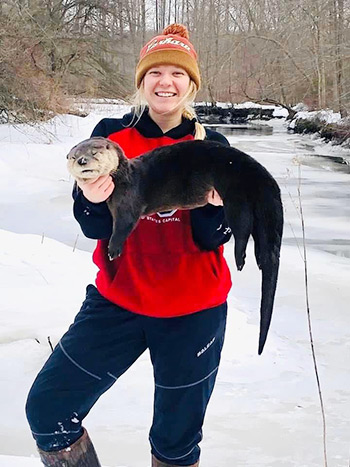 Team Fur News - Nov23
Team Fur News - Nov23
The Deer Month
By FUR-FISH-GAME Editor, John D. Taylor
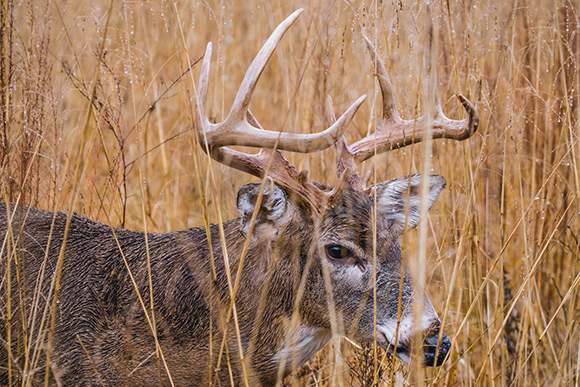
November is the deer month. Photo: Anthony Roberts/Unsplash
For Christmas in 1972, my grandfather, Walter John Taylor, gave 12-year-old me a trio of No. 1 Victor longspring traps, purchased from Kleindienst & Hopper’s in Red Lion, Pennsylvania. K & H was a general store that sold everything from plumbing supplies, lumber and fuses to duck calls, deer rifles and hunting licenses. I suspect my uncle, Dave Reichard, had a hand in that gift, because his “mushrat” trapping stories were standard fare.
Grandpa Taylor never got to see what those traps produced. He passed away on a rainy March day in 1973. My child mind believed the cold rain that continued during his funeral was the world weeping for the loss of this good man, a gentle man of the Earth. Yet something extraordinary came out of the wake after the funeral.
That’s when I was introduced to my second cousin, Clark Taylor, who lived across the Susquehanna River, in faraway Lancaster County. Clark was of my father’s generation. He’d hunted bears in Alaska, and he owned a deer camp in Potter County, Pennsylvania, our region’s preferred deer mecca.
Uncle Dave certainly had a hand in this, quietly pushing my father and me towards Clark at the wake. I asked Clark about Alaska, because I intended to move there, build a log cabin along the Talkeenta River, heat it with 55-gallon drums converted into a wood stove, trap and hunt full time, just like Jeremiah Johnson – Dad and I had just seen the movie – plans all drawn out in a notebook. Then Clark suggested Dad and I hunt deer with him that fall.
The previous fall, my first deer season, Dad and I hunted whitetails with Uncle Dave on a Susquehanna River island. He rowed us out, dropped Dad and me off at one end of the island, rowed to the other, then “pushed” deer toward us. Perched on a big rock, I watched a doe (bucks only then) bolt from cover and almost run over me. I doubt my single shot H&R “Black Bart” .410 loaded with slugs would have been very effective on a buck at more than 20 yards, but it was all so exciting.
Our first trip to Potter County, to Clark’s “Camp Wa-ke-da” – an old two-story farmhouse with ancient furniture and no potable running water – came the Saturday after Thanksgiving in 1973. Pennsylvania’s traditional deer season opened the Monday after the holiday. We made the long drive north in Dad’s blue Bronco and were greeted by Clark and Winfield “Winnie” Kennard, his former landlord and hunting partner.
Potter County was a blitz of new experiences.
For a few hours on Saturday, we hunted turkeys – the seasons overlapped then – on the big mountainside across Rt. 872 from camp. Clark told me where to go in terms I didn’t quite understand; and when I didn’t return at the appointed hour, then dark, they worried I was lost – until I showed up at the door. I wasn’t lost, just long getting off the mountain. Topo maps were quickly acquired; Boy Scouts taught me how to read them.
Sunday, you couldn’t hunt, so we “scouted.” We crossed the rickety one-person-wide suspension footbridge across West Darin Run, then hoofed in to explore new mountains we’d hunt the next day.
Sunday night we prepared. Winnie, a man my grandfather’s age, pulled his Winchester Model 94 in .32 Special from a green, handmade wooden case, affixed the detachable scope, and knew it would shoot true the next morning. Clark sat at the kitchen table, loading his leather bullet belt pouch with .243 cartridges from a green and yellow Remington box. Dad readied his Marlin 336 in .35 Remington, and I was loaned the use of Clark’s iron-sighted Winchester Model 94 .30-30. After dinner, we played cards – Hearts, a game I came to despise because college math professor and card counter Clark knew every card in your hand before you did.
Sleep didn’t come easy that night. I tossed in the red flannel sleeping bag on the green sofa downstairs while the men slept in beds in the loft.
Clark’s wind-up alarm rattled at 4:30 a.m., earlier than I’d ever been up before. After a bacon and eggs breakfast, we crossed West Darin Run to spend the day, dawn to dusk, still hunting, Clark’s preferred technique, across the sidehills of those big mountains. We packed lunches. Dressing appropriately for activities that ranged from sweaty climbs up the steep slopes, to standing stationary in cold and snow was impossible. I’ve never been colder – even tending horses in -56 Wyoming wind chills – than in those mountains. Damp cold ate through every layer a flatlander kid in green rubber boots with yellow fuzz inside, cotton long johns, blue jeans and a winter coat topped by the appropriate blaze orange requirement could muster.
For the next 30 years, Dad and I would hunt deer in Potter County. Dad wasn’t really a hunter. He went because I loved it, and family was involved, the same way he drove me to check those traps his father gave me at 5:30 every morning until I could drive.
In 1976, I shot my first buck in Jacob’s Hollow, up Rt. 872 from camp. Clark always ramrodded our deer maneuvers. He sent Dad and me up the front face of Jacobs, me to post at the top. Winnie would watch the valley in case deer slipped out. Clark would still hunt across the flank of Jacobs, pushing deer towards us.
It was 17 degrees with a couple of inches of crusty snow that morning. So, I wore the blaze orange snowmobile suit I’d acquired from Collinsville Discount Center at home. Climbing the mountain, I unzipped every zipper on it. Waiting for Clark’s push to be completed, I shivered when sweat almost froze under it – until the crunch, crunch of deer hooves reached my ears.
A four-point buck (spike with brow tines) trotted 40 yards out in front of me in open timber. I raised my new Remington 788 .308, leveled the 4x scope on the buck’s chest when he stopped, and squeezed the trigger.
He ran just a short distance then toppled. I sprinted to him, looking for a blood trial as I went, but couldn’t see it from the adrenaline roaring through my arteries. I’d taken my first buck! Words cannot appropriately express the blend of joy, regret and accomplishment involved in this rite of passage.
Not knowing how to field dress a deer and wanting to share my joy, I leaned my rifle and green Army lunch satchel against the tree beside the deer, used my drag rope to hog-tie the deer, rifle and satchel to the tree – he might get away? – then took off running down over the mountain towards my father hollering “I got one! I got one!”
My father would later say he saw an orange blob racing down the hill towards him, unzipped snowmobile suit flying. I was just a little excited, he said.
We climbed back up the hill, looked over the deer, and by that time, Clark arrived. Clark gutted the buck, showing me how; helped attach my drag rope with the front feet over the antlers, then let me pull the buck down off the mountain. Near the valley, we ran into Winnie. He said it was a dandy buck, with a rut-swollen neck, words that felt like my grandfather’s approval.
Potter County deer openers continued. Before dawn back West Darin Run one rainy opener – “liquid sunshine” my father called it, smirking; we all groaned – I fell into a big water-filled hole. I sloshed back to the Bronco, ran the heater until I dried out some, then began hunting. Dad couldn’t figure out where half a tank of gas had gone.
Another year, Winnie, his vision failing, shot a button buck – he said it acted like a buck and he thought he saw antlers. He reported it, but that mistake ended his hunting, a sad day, because Winnie was one of several surrogate grandfathers I related to, with his Bean boots, love of waterfowling and trapping experiences.
Scott, Clark’s son, joined us for his first deer seasons soon after, and things changed. No more 4:30 a.m. alarms or hoofing it into West Darin Run’s wilds. Now, we drove into the mountains, “pottsed” around for the first couple hours, sitting, waiting for deer to move.
Scott would soon prove himself quite the hunter when he persevered through an extremely windy, rainy day to take a nice-rack buck in a subsidiary hollow of Jacobs, a place we renamed Scott’s Hollow.
Clark’s passion for hunting seemed to ebb as time went on and deer numbers fell. We commonly saw 20 or more does daily in the 1970s. Bucks, even spikes, were rare. By the 1990s, deer numbers were fewer.
Pennsylvania Game Commission tomes and the multiple deer hunting magazines Clark subscribed to said hunt the young timber, where deer numbers were greater. But Clark, still ramrodding us all, stuck to unproductive haunts. We simply weren’t getting into deer. When I suggested trying a few grouse coverts, Clark said, “I’m not going in there.” I couldn’t understand why he had no problem dragging my 13-year-old carcass way back into the boondocks for all-day hunts but wouldn’t try something new to get into deer.
Clark was one of my childhood’s heroes, but I saw then we were on different trails. Those first 10 years, a formative time for me as a hunter, were great. Clark’s emphasis on hunting ethics, doing things right, the hard way, stuck. I subconsciously emulated him in many ways. Although I’d become more a bird hunter than a deer hunter, khaki pants, a love of the backcountry, hiking and Bean boots became my standards. The second decade wasn’t too bad. I tagged three more Potter County deer. But by the third decade, deer camp became more mini-family reunion and card games than hunting, and I wasn’t into that. I simply wanted to hunt.
When my friend and wildlife artist Denny Burkhart offered a hunt in his very hunt-focused Tioga County deer camp, I accepted. Dad elected to put down his rifle. And a tradition was broken.
Since then, other wild places have summoned me, my deer hunting expanded into new environments – especially the West. Venison became what’s for dinner at the Taylor homestead, and I’ve tagged several nice whitetails and a couple of good muley bucks on the prairie. I’ve come to love prairie deer far more than those cold, wet Pennsylvania mountain deer. Yet I never hunt November deer without thinking about Clark, Winnie, Uncle Dave, my father and grandfather. Those Christmas traps were a direct line to what I do today, what I love most in life. Thank you, grandfather…
Poachers Get Busted
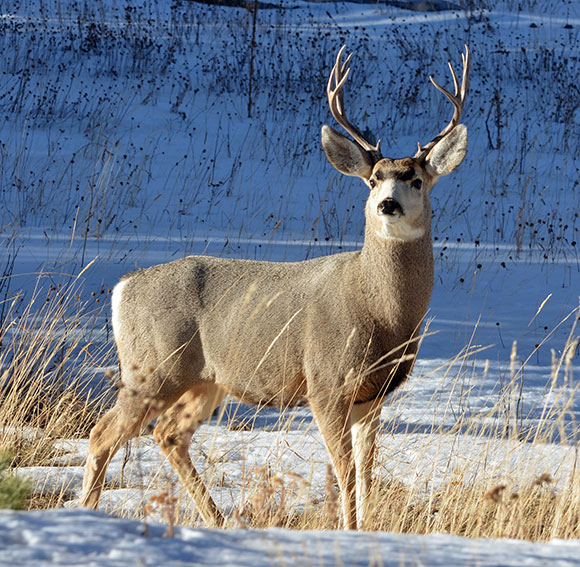
Three Nevada hunters were convicted of several wildlife crimes after illegally taking a mule deer buck. Photo: Steve Adams/Unsplash
In two states – one in the East, one in the West – deer poachers are discovering their crimes don’t pay. In Las Vegas, Nevada, for example, three men were recently convicted of several wildlife crimes for illegally killing a mule deer. Based on a tip from the public, a Nevada Department of Wildlife (NDOW) investigation determined that Bailey Thompson, 23, of Las Vegas, along with James Ebert, 51, and his 22-year-old son Justin Ebert, both from Caliente, spotted a trophy sized buck on private property in Hunt Unit 242. Knowing they couldn't legally shoot the animal on private property, the three men used a drone to harass the mule deer off private property. Once on public land, Thompson illegally shot and killed the animal. Ultimately, evidence obtained through multiple search warrants led to the conviction of all three men. Thompson was convicted of unlawful killing of a big game animal, unlawful possession of a big game animal and conspiracy. Both Eberts were convicted of unlawful possession of a big game animal and conspiracy. The trio will split a $15,000 civil penalty and lose their hunting, fishing and trapping privileges for five years. Also, their names are now in the Interstate Wildlife Violators Compact, where more than 45 other states honor Nevada’s five-year suspension in their own states. Plus, the trio forfeits any bonus points accrued for big game in Nevada.
In Vermont, after a night investigation and a long court process, Shane Phillips, 43, of Johnson, was mandated to forfeit his vehicle and firearms, plus pay fines and lose hunting privileges for “deer jacking” — illegally shooting deer at night. During a night operation by game wardens at multiple locations in the town of Johnson, wardens witnessed Phillips in his black 2011 Buick Regal spotlight two deer facsimiles (full-bodied taxidermy mounts) placed by game wardens to draw out poachers. The wardens watched Phillips shoot the buck with a crossbow, then flee. He was eventually caught via a search warrant. Phillips was sentenced for five charges: taking big game by illegal means, taking big game in closed season, shooting from a motor vehicle, shooting from a public highway and possessing a cocked crossbow in a motor vehicle. He must pay $2,877 in fines and will lose hunting, fishing and trapping privileges for three years. Plus, the Lamoille County Superior Court made Phillips forfeit his vehicle and his crossbow.
To report wildlife crimes in Nevada, call (800) 992-3030 or use the new NDOW Tip app to anonymously submit tips, photos or video to NDOW via text messages. The app is available for download for free via the Google Play Store, iTunes App Store, or by visiting the agency’s website at www.ndow.org. Vermont’s toll-free hotline anti-poaching is 1-800-75ALERT (1-800-752-5378). Callers can remain anonymous and the line is open 24/7/365.
El Niño moisture helping Oklahoma quail
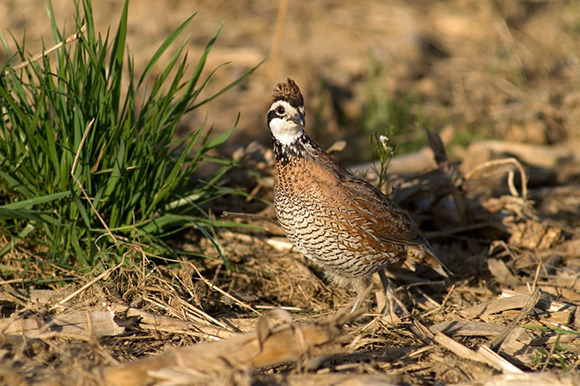
Moisture is helping Oklahoma’s bobwhite quail numbers. Photo: WVDNR
According to Tell Judkins, upland game biologist with Oklahoma’s Department of Wildlife Conservation (ODWC), August’s roadside quail survey showed the statewide quail index up 45.8% from 2022, climbing from 1.53 to 2.23 quail per route. ODWC conducts roadside quail surveys in August and October annually. The number of quail observed are recorded. Since 1990, these surveys provide an index of quail abundance, measuring population fluctuations and indicate reproductive success. ODWC employees survey 81 routes in 75 of Oklahoma’s 77 counties. While the August count is still more than 55% below the long term (34-year) average and 28% percent below the 10-year average, Judkins noted if favorable weather continued, it could lead to even better numbers in an October survey. After three consecutive years of La Niña (warmer/dryer) weather patterns – last year the entire state was in drought – Judkins noted that following a mild winter, spring of 2023 saw a transition to an El Niño (cooler/wetter) weather pattern. This generally results in better quail numbers. Rainfall throughout the growing season is feast or famine, Judkins noted. Precipitation in May and June this year produced good conditions. All regions but the northcentral improved from the 2022 survey. Oklahoma’s quail season opens Nov. 11 and closes Feb. 15, 2024. There is a 10-bird daily bag limit. For more regulations and other information, visit wildlifedepartment.com/hunting/regs.
Waterfowlers: Wear Your PFDs
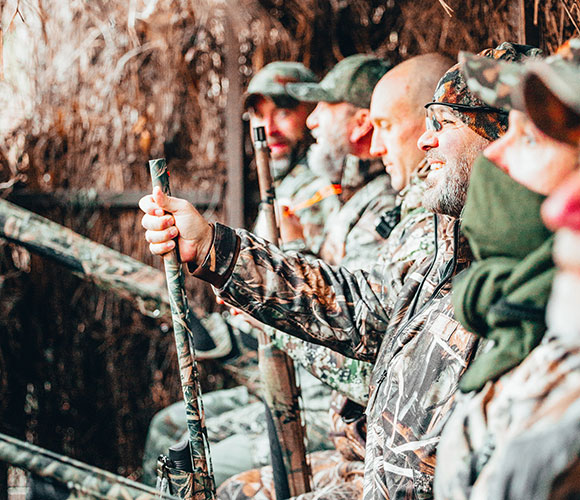
Wisconsin’s DNR says waterfowlers should wear their life jackets on the water.Photo: Aaron James/Unsplash
The Wisconsin Department of Natural Resources (DNR) anticipates more than 74,000 waterfowl hunters to use the waterways this fall and wants to remind everyone to wear their personal flotation devices (PFDs) and follow best water safety practices. With 18 boating accidents as of September of 2023, DRN asks waterfowlers to:
• Always wear a life jacket on the water. And protect canine companions– they need life jackets, too.
• Water temperatures cool rapidly in fall. Going overboard can quickly turn dangerous due to hypothermia.
• Never overload a boat. If hunting on a large river or lake, use a boat big enough to handle rough water. Balance the boat evenly and keep weight low for stability.
• LED lights should be left off as you navigate to and from hunting spots, since it’s critical not to obstruct red/green navigation lights and the standard 360-degree white stern light.
• Watch out for changing weather and obstacles like a slightly submerged stump, rock, sandbar or floating debris.
• Establish and communicate safe fire zones when hunting with others from a boat. Don’t stand to shoot when a partner is shooting from a seated position.
• Always carry a cell phone for emergencies.
• Waders can be dangerous if a boat capsizes, waders can quickly fill with water creating suction that makes removing the waders difficult. The added weight greatly increases the risk of drowning.
• One wearable life jacket is required for each person on board a boat. It must fit properly. Also, a throwable PFD, like a ring buoy or standard seat cushion, is required for every boat longer than 16 feet.
For more information, visit https://dnr.wisconsin.gov/topic/hunt/regulations.
Hunting West Virginia
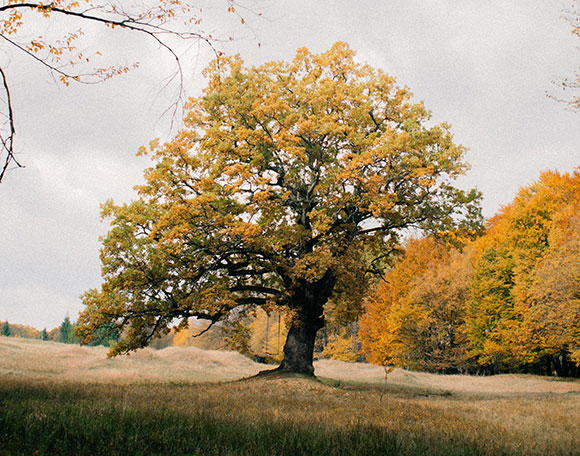
West Virginia hunters should check the annual Hunting Outlook and Mast Survey which provides details about mast abundance in the state. Photo: Sabin Zablau/Unsplash
Hunters getting ready to hunt West Virginia this fall would do well to take a deep dive into the 2023 Hunting Outlook and Mast Survey from the state’s Division of Natural Resources (DNR). The annual Outlook provides details about the abundance of mast, such as wild fruits and nuts, produced by 18 species of trees and shrubs and the forecasted impacts to West Virginia’s wildlife. “Beech, walnut and hickory production was up compared to 2022 production and above average across all ecological regions,” said Holly Morris, furbearer and small game project leader for the WVDNR’s Wildlife Resources Section. “In addition, red, black and scarlet oak production was up compared to last year and above the long-term average.” Soft mast production was mixed Morris noted, saying hunters should pay close attention to the ecological regions they’ll be hunting and do plenty of scouting to determine how mast conditions will affect their plans. Locating good, natural foods can increase a hunter’s odds of success. Hunters can find a wealth of facts in the Outlook, a helpful resource. Visit WVdnr.gov/mast-survey.
North Carolina Had Record 2022 Bear Harvest
Results compiled from 2022’s North Carolina Wildlife Resources Commission’s (NCWRC) annual bear harvest summary show hunters bagged a record number of bears – 4,056 bruins, an 11% increase from the previous season. Record-breaking harvest totals were recorded in the Coastal and Mountain Bear Management Units (BMU), with 2,533 and 1,468 bears respectively. The Piedmont BMU experienced its third-highest recorded harvest of 55 bears. “The increase in the harvest in the Mountain BMU likely reflects the influence of the poor acorn crop in this region,” said Colleen Olfenbuttel, NCWRC’s black bear and furbearer biologist. “Acorn production has been surveyed by the Wildlife Commission for 40 years and when acorn production is poor, bears will move more in search of fall foods, making them more vulnerable to both vehicle mortality and legal hunter harvest.” In the Coastal BMU, the record harvest reflects the continued interest in bear hunting, due to its reputation for large bears and, in some areas, high bear densities, Olfenbuttel noted. Most bears were harvested on private lands, with just 16% of the harvest occurring on Commission game lands. In the Mountain MBU, 34% of the harvest occurred on Commission game lands. Most successful hunters used dogs. However, the number of still hunters increased, with 41% of successful bear hunters reporting they used still hunting to harvest their bear, the highest percentage since the Commission gathered this information in 2009. “Bear hunting seasons are highly regulated and play a key role managing local bear populations, helping to resolve agricultural damage, reinforce a bear’s natural fear of people, and providing wild game meat to communities and families,” Olfenbuttel said “The 2022 bear harvest produced an estimated 591,700 plates of food, providing an important source of sustenance for many North Carolinians.” In 2021, with support from the state’s Bear Hunters Association, NCWRC began requiring bear hunters to submit a premolar tooth from their harvested bear. The data gained from the tooth provides the Commission with information about the age structure of the harvest, which is used to monitor bear population trends After submitting their harvested bear tooth, hunters receive a hat and the age of their harvested bear. This program has been enthusiastically embraced said Olfenbuttel. For the complete report, visit https://www.ncwildlife.org/Learning/Species/Mammals/Black-Bear.
Hurricane Alters Seabird Sanctuary
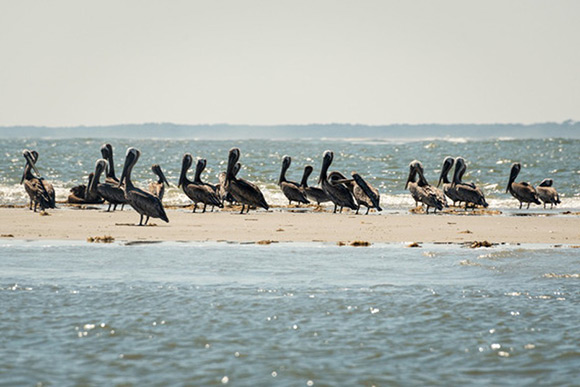
Idalia posed a threat to pelicans at Deveaux Bank Seabird Sanctuary. Photo: SCDNR
Tropical storm Idalia made dramatic impacts on Deveaux Bank Seabird Sanctuary, a protected and critical seabird habitat, located in the mouth of South Carolina’s North Edisto River. This property is owned and managed by the state’s Department of Natural Resources (SCDNR). After making landfall in Florida, Hurricane Idalia came across to the coast of South Carolina on August 30. This coincided with a full moon high tide, predicted to be 6.9 feet in Charleston Harbor. With the associated wind and water from Idalia, the tide in Charleston Harbor crested at 9.2 feet that evening, the fifth-highest peak record and just shy of Hurricane Matthews 2016 9.29 feet and Hurricane Irma’s 2017 9.92 feet. Deveaux Bank supports more nesting brown pelicans than any other site on the Atlantic coast, making it one of the most important islands in the region for pelican survival. Migratory shorebirds, such as red knots, piping plovers and whimbrels, also flock to Deveaux beaches that are free from disturbance, essential for their survival after long journeys. Birds utilizing Deveaux Bank are of high conservation concern, so the public is asked to follow closures and no-dogs-allowed rules. Shortly after the storm, two-thirds of the island was underwater from mid-tide to high tide due to overwash and erosion caused by the storm. The western tip of the island, closest to Edisto Island, and the stretch of beach along the oceanfront bore the brunt of the storm’s impacts, while the dune ridge along the northern edge of the island, facing Seabrook Island, remained dry and intact. SCDNR biologists surveyed the sanctuary after the storm to assess habitat: Fortunately, the brown pelicans that nested along the side of the island facing Edisto Island had mostly fledged their young, SCDNR Coastal Bird Program biologist Felicia Sanders said. Also, some 500 downy pelican chicks remained on the island’s high ground where adult pelicans nested later in the season. Many juvenile pelicans and migratory shorebirds utilized the newly formed sandflats to rest and forage, and for this reason, seasonal closures remain in place with portions of the island closed to boat landings. For more information contact Sanders at sandersf@dnr.sc.gov.
Emerald Ash Borer Threatening Tree Species
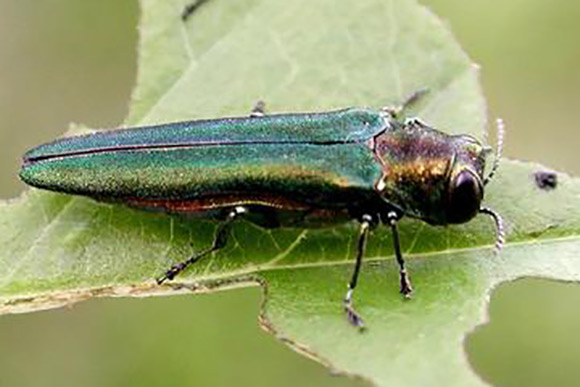
Emerald ash borer adult. Photo: USDA APHIS
New Michigan State University research details how the emerald ash borer (EAB), an invasive forest pest native to Asia, is jeopardizing the entire U.S. and Canadian native range of black ash trees. The finding is particularly troubling because the trees are culturally important to native peoples. EAB was first discovered in southeast Michigan and southern Ontario in 2002. Since then, researchers say it has become the most devastating forest insect to invade North America. MSU’s Deborah McCullough, an expert on the pest, has studied its effects on ash forests for more than two decades. “Adult beetles nibble on ash leaves but cause little damage. Larval feeding beneath the bark, however, is the real problem,” she said. EABs have killed hundreds of millions of ash trees in the U.S. and Canada, an ecological and economic problem. Black ash is unique because it grows in swampy or boggy forests, where few other trees can survive. Many Indigenous tribes in the eastern U.S. and Canada use black ash trees for basket making and other purposes, so it is a highly valued cultural resource. Female EAB beetles lay eggs on the bark of ash trees during the summer. The eggs hatch within two weeks and the larvae — the immature grub-like stage — burrow through the bark, feeding in in tunnels (called galleries) on the inner bark. This damages the tree’s ability to transport nutrients and water, eventually killing the tree. Researchers projecting EAB expansion used the spread of EAB in the U.S. and Canada from 2002 to 2020 to predict the future. Two scenarios were modeled: one assuming EAB would continue to spread at the same rate, another that factored management to reduce annual spread by half. By 2020, EAB had invaded nearly 60% of the native range of black ash, spreading at roughly 31 miles per year. Based on this, McCullough and colleagues estimated more than 75% of black ash trees will be lost across 87% of the species’ range by 2035 under both scenarios. By 2040, EAB will likely have killed all or nearly all overstory black ash across its native range. Current methods to thwart EAB dispersal have been largely unsuccessful, but McCullough said there is hope. Effective insecticides that are injected into the base of trees are available and can protect trees from EAB for three years. These injections can be coupled with girdling — killing the tree without felling it. Girdled trees act as traps attracting EAB adults to the treated trees, while reducing the growth of the EAB population in the area. Public outreach efforts have led to fewer people transporting firewood, McCullough said, but EAB will continue to spread since mature female beetles can fly substantial distances. “Black ash is extremely vulnerable to EAB, more so than any other ash species,” McCullough said. “Our results show that over the next 20 to 25 years, the invasion will encompass virtually the entire native range of black ash in North America. It’s going to take a collaborative effort among scientists, Indigenous experts and resource managers to preserve black ash resources as best we can.” Research results were published in the journal “Frontiers in Ecology and the Environment.” For more information, contact Cameron Rudolph at rudolp31@msu.edu or Deborah McCullough at mccullo6@msu.edu
Canadian Zebra Mussel Infestations Threat to Maine
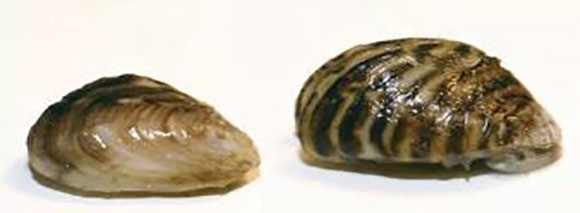
Invasive zebra mussels. Photo: MDIFW
Invasive zebra mussels found in the Saint John River drainage in both Quebec and New Brunswick, less than 30 miles from Maine, pose a threat to the state’s waterways, says Maine’s Department in Inland Fisheries and Wildlife (MDIFW). Why? Because zebra mussels in the Canadian end of the Saint John River, could serve as a vehicle for introducing zebra mussels into the headwaters of the Saint John, in Maine. They could also be a conduit, transported on watercraft, for introducing zebra mussels into other Maine waters, says MDIFW. Zebra mussels have not been confirmed in any Maine water. However, they represent a significant threat to the health of Maine waters, fish and wildlife because the irreversible negative impacts on native species and waters are nearly impossible to eradicate once introduced. Zebra mussels filter and hold a substantial amount of important food and nutrients that native organisms require, negatively impacting all native fish and wildlife in the water body. Also, unlike native mussels, zebra mussels attach to hard surfaces including watercraft, pipes (which can clog intake/outflow), rocks, docks, even native mussels. Zebra mussel larvae are microscopic, and the larvae is most likely to be spread from one water to another. That’s why it’s imperative all outdoor enthusiasts use extreme caution to limit this spread. Maine recently passed a law requiring boaters to drain water from their watercraft prior to entering a water body or leaving a launch site. Always practice standard clean, drain, dry recommendations and laws for watercraft. Allowing watercraft and gear to dry thoroughly between water bodies is the most effective ways to prevent zebra mussel spread. Drying should occur for multiple days when possible. For more information, visit www.maine.gov/ifw/fish-wildlife/fisheries/aquatic-invasive-species.html.
What’s Coming in December
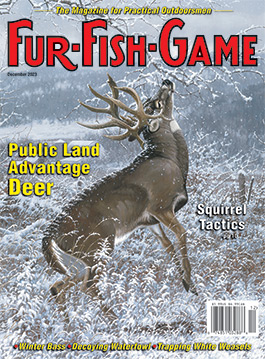
9 Reasons You’re Not Finding Public Land Deer - Josh Honeycutt looks at nine reasons you might not be finding good public land deer hunting and offers suggestions to improve your lot.
Late Season Squirrels - Bruce Ingram shares tips and tactics for hunting predictably unpredictable late season bushytails.
Getting it Right for Winter Whites - Phil Goes shares his ideas on a better way to trap weasels, how focusing on the details can make all the difference.
Now is A Good Time for Used Rifles - With many new cartridges becoming popular, some fine standard rifles, like the .30-06, .270 or .308, are ending up on the used gun racks. This may be the best time to buy some of these proven big game firearms, says Randy D. Smith.
Finding the X: Adventures in Waterfowling Algebra – Being on the X, that magic spot where ducks and geese want to be, is critical for late season waterfowl success. Phil Goes looks at how to accomplish this.
Other stories include:
• Winter Bass Time - Jeffery Walters offers tips and tactics for catching winter bass.
• The Best Gift You Can Buy a Hunter – Josh Isabel explores how journaling his hunts has resulted in capturing treasured memories as well as useful information for the future.
• Year of the Otter – Kevin Dunse shares his efforts to catch his first – and second – Wisconsin otters.
• Catching Tricky Canines – Andrew Zysek relates how he used a furrow along a woods and a urine post set to catch a chicken killing fox that had a reputation for digging up other traps.
• Deer Logs- Dave Wolf looks at how deer use downed trees – “deer logs” – for cover and shares his tactics for keeping an eye open for these deer-laden areas.
• Hunting Late Season Canadas –Outwitting late season Canada geese is tough. Ron Peach shares how to do this under a variety of conditions in numerous locations.
• Beavers above the Mason-Dixon Line – Pat Donnelly and two friends shared a week’s adventure of beaver trapping in northcentral Pennsylvania. This is his story.
End of the Line Photo of the Month
Emily Brendlinger - Edinboro, Pennsylvania
SUBSCRIBE TO FUR-FISH-GAME Magazine

